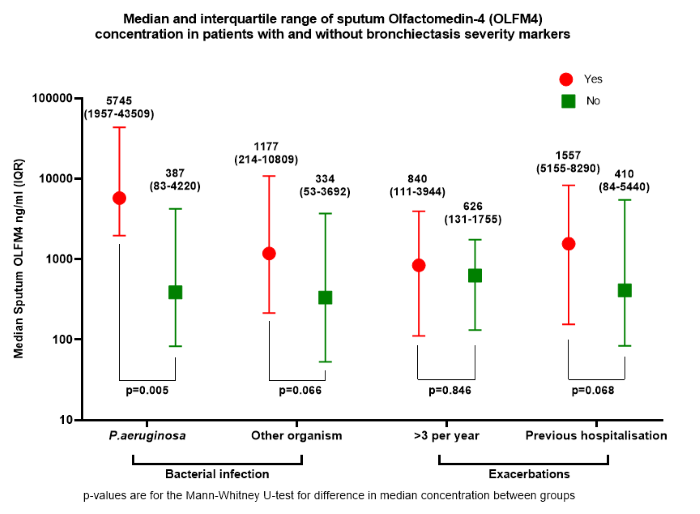Abstract
Introduction: Olfactomedin-4 (OLFM4) defines an anti-inflammatory subset of neutrophils and is present in only around 30% of peripheral blood neutrophils. Knockout of OLFM4 enhances responses to bacterial infection suggesting that OLFM4 suppresses host clearance of bacteria. We investigated airway levels of OLFM4 and their relationship to bacterial infection in bronchiectasis.
Methods: Sputum OLFM4 concentration was measured by ELISA in sputum samples from the pan-European, multicentre EMBARC-BRIDGE study. Clinical severity markers included microbial infection, lung function, exacerbations, BSI score and radiological parameters.
Results: 181 patients were included. Mean age was 65 (± 16) and 49.1% were female. Median OLFM4 concentration was 785ng/ml (IQR 115-6267). OLFM4 concentration correlated positively with sputum PR3 (r 0.715, p<0.001), NE (r 0.402, p<0.001) and IL-8 (r 0.665, p<0.001). P.aeruginosa infection (p=0.005), sputum purulence (p<0.001), and presence of mucus plugging on chest CT (p=0.024) were associated with higher sputum OLFM4. OLFM4 sputum levels were also higher in patients with a history of severe exacerbations, higher exacerbation frequency and lower FEV1 but differences were not statistically significant.
Conclusion: Sputum OLFM4 correlates with markers of neutrophil activation and clinical severity in bronchiectasis.
